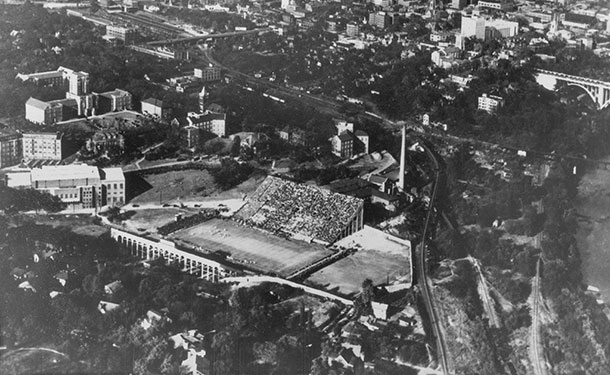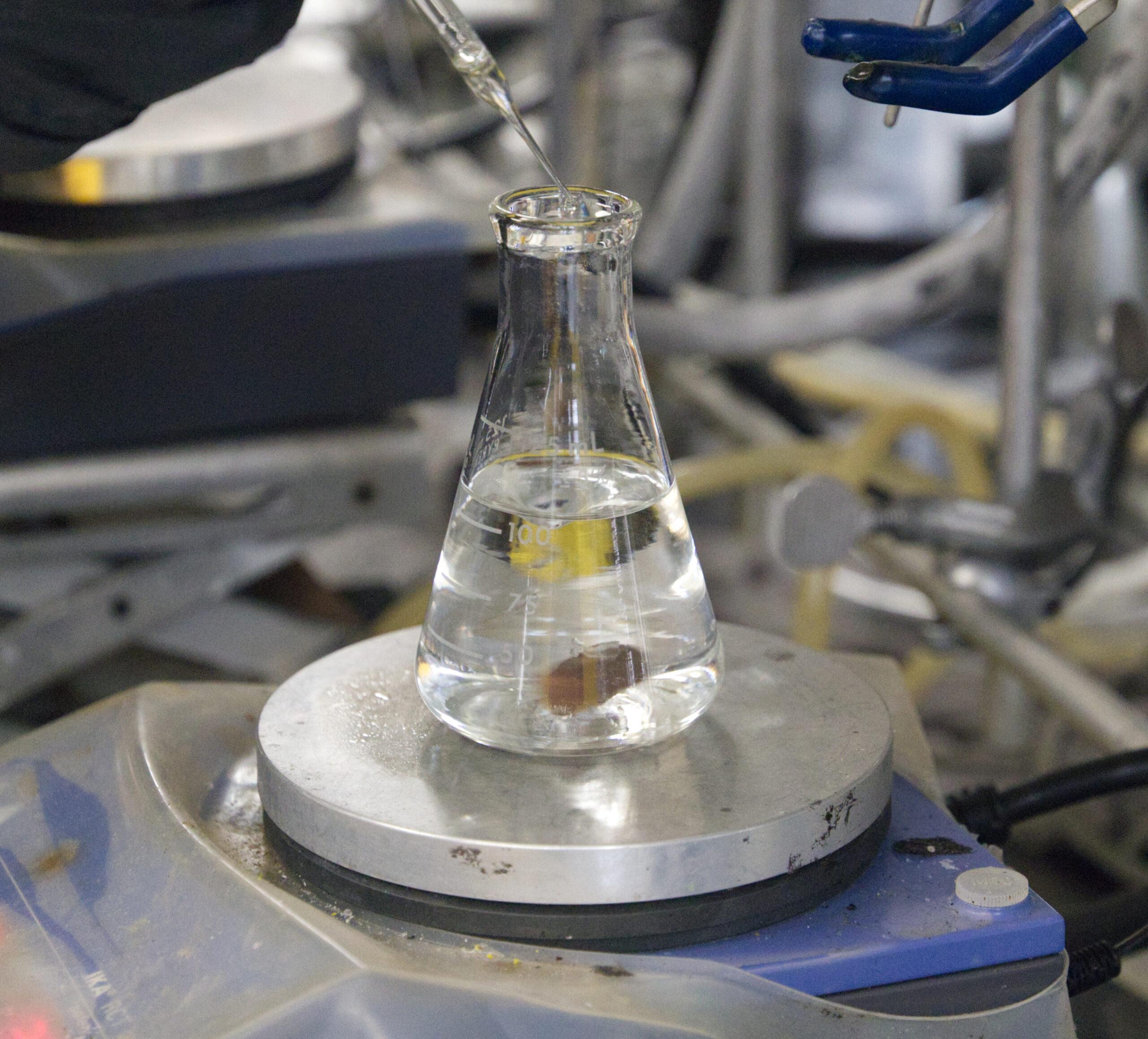
History
History of Collaboration
Neighboring institutions with different histories and cultures find ways to make “beautiful science” together.
While the University of Tennessee and Oak Ridge National Laboratory have very different histories and goals, both are closely linked by the physical and biological sciences. The university’s Knoxville campus can be traced back to the late 1700s; the national lab at Oak Ridge began as a secret facility to understand and purify uranium and plutonium during World War II.
As WWII approached, the state’s flagship university was still known more for its literary and humanities faculty and agricultural studies than for research in the sciences. Even when the US Army located the Manhattan Project nearby, the university remained disconnected from the top-secret facility.
The end of the war changed all that.
Opportunistic Growth
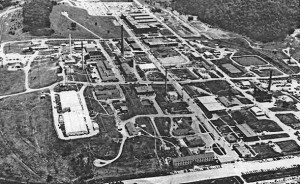
“The really strong interaction began right after World War II,” explains Bill Bugg, who came to UT as a physics graduate student and later became head of the department. “All the GIs were coming home and seeking further education, and the Oak Ridge workers who had interrupted their graduate studies to work on the Manhattan Project were ready to resume their academic careers.” The university’s board of trustees responded to this demand by offering newly minted PhD programs—in chemistry and physics, as well as in English.
“The university set up a program of teaching graduate courses wherever they needed to be taught—at UT or in Oak Ridge,” Bugg says.
At this time, UT physicist Alvin Nielsen began to work a day a week at ORNL and George Schweitzer joined the chemistry faculty, specifically to start and oversee their graduate program at Oak Ridge.
“Many UT science faculty became one-day-per-week consultants and worked in the summers in Oak Ridge,“ Bugg says. “They were able to do research that would not have been possible on campus.”
These earliest interactions were enhanced in 1964, when Nielsen, by then head of the physics department, won a grant from the Ford Foundation that allowed ORNL scientists to teach courses as adjunct faculty. That $500,000 allowed the lab and university to compensate ORNL scientists for time spent teaching at UT.
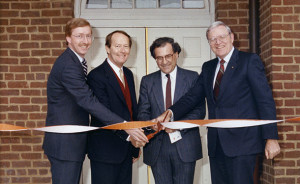
From the perspective of ORNL scientists and administrators, these early collaborations also held the promise of an invaluable commodity—cheap but highly enthusiastic labor in the form of graduate students.
Alex Zucker, who served in a variety of administrative roles at the laboratory, remembers feeling jealous of the arrangements other national labs had with nearby universities.
“I was envious of Berkeley,” Zucker remembers. “They had free people. The people at the labs liked students—they take a lot of the work.”
Opportunity Breeds Ambition
In 1982, the university began its most ambitious move to date toward melding UT’s research interests with those of ORNL and strengthening the relationship between the two institutions.
Union Carbide, which had managed ORNL since the war years, decided to relinquish its contract. The late Jack Reese, then-chancellor of the Knoxville campus, named a committee of physicists to determine whether UT could manage the facility.
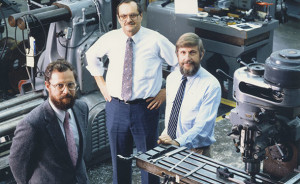
“This was really the beginning of UT focusing on central issues, on big issues at Oak Ridge,” according to Lee Riedinger, one of those committee members and UT’s current interim vice chancellor for research. When the Department of Energy decided not to seek individual contracts for the three major components of its Oak Ridge operations, “that’s when we dropped out. We were not ready as an institution, but it was good for us because it got us thinking of the big picture.”
Soon thereafter, then-governor Lamar Alexander called on Reese for projects to present to Howard Baker, the majority leader of the US Senate and senior senator from Tennessee.
“[Alexander] said he was going to ask Baker to see if they could write into the bid process some words that would require the next contractor to do something with UT,” Riedinger recalls.
Reese turned to members of the earlier study committee, and on a Sunday afternoon in October 1982, Riedinger, Paul Huray, and Ivan Sellin sat around Huray’s kitchen table and dreamed up the Distinguished Scientist Program. They decided that only by attracting researchers with international reputations could the university hope to improve its standing among national research institutions. With $10 million from the state legislature, the university initiated the Distinguished Scientist Program as a part of what came to be known as the Science Alliance, a formal organization that linked ORNL and UT science operations.
The Science Alliance was complemented by the creation of a number of joint institutes designed to exploit the strengths of both institutions and focus on collaborative efforts.
Soon thereafter, a Collaborating Scientist Program evolved from the Distinguished Scientist model. It allowed the university and ORNL to share the costs of hiring prominent research scientists at an early stage in their career to work for both institutions. An agreement between UT and ORNL was put in place in late 1991, and by 1993, eight collaborating scientists had been hired.
Ambition Nourishes Capability
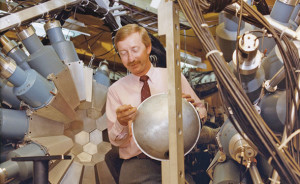
This evolving process would bear fruit when, in 1998, rumors began to circulate that after fifteen years under Lockheed Martin, DOE would again put the management of its Oak Ridge operations in play.
“This time UT was ready,” Riedinger remembers. “DOE had split the contract so that it was only ORNL we were competing for and—because of the Science Alliance, because of the joint hires, because of the joint institutes—we were ready to demonstrate the capability to compete.”
“We had to have a partner, since we had no demonstrated ability to manage a reactor or a plant of that scope,” Riedinger explains.
The university identified Battelle, an international science and technology organization that already managed Pacific Northwest National Laboratory, as a potential partner, but Battelle remained aloof to UT’s overtures. It wasn’t until Battelle executive Bill Madia paid a visit to then-president Joe Johnson that the university found its partner.
“When Madia and Johnson met, it was clear within five minutes that this was a partnership we should sign,” Riedinger says. “Just before Thanksgiving 1998, we married Battelle.”
In 1999, Tennessee Governor Don Sundquist committed $26 million in state funds for creating additional joint institutes, and the university started hiring more collaborating scientists, which it then labeled joint faculty. The university and the lab modified the existing joint-faculty agreement, moving to a loaned-employee model to reflect the fact that ORNL scientists cannot be guaranteed permanent employment.
“The shared employee mechanism opened the floodgates,” Riedinger says. “That has led to the mass of people now working at both places. They come and go, but I think it works well.”
The Department of Energy awarded the management contract to UT-Battelle in 2000. In the succeeding years, the UT-Battelle partnership has flourished, state and national support has remade the ORNL campus, and UT has profited from a unique relationship with the largest US Department of Energy multipurpose national laboratory.



